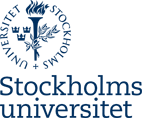“It is fascinating to understand how nature has combined different modules like Lego blocks within this large protein in order to gain new biological function. This enables the photosynthetic complex I to cross-talk with other photosynthetic proteins so that the energy from photosynthesis is used for pumping protons across the bacterial membrane and concentrating carbon”, says Ville Kaila, Department of Biochemistry and Biophysics, Stockholm University.
Plants and other photosynthetic organisms like algae and cyanobacteria use the energy of sunlight to build complex organic molecules. The process utilizes carbon dioxide (CO2) and water molecules as building blocks, which photosynthetic proteins convert into sugars and oxygen. First, the carbon dioxide gas must however be concentrated into bicarbonate, which requires an input of energy in the cell. Until now, the molecular principles of the proteins responsible for this process have remained unknown.
Using a combination of cryo-electron microscopy, biochemical experiments, and advanced computer simulations, the researchers were able to map the molecular principles by which this protein takes up electrons from photosynthesis and uses this to concentrate carbon dioxide in the cell membranes of cyanobacteria. Cyanobacteria were among the first photosynthetic organisms that evolved around 2.7 billion years ago. As CO2 concentrations drastically changed during this time period, the bacteria had to develop such specialized proteins to survive.
The protein module responsible for the CO2-conversion has a unique structure that no one has ever seen before.
“We were amazed to see how exotic chemical groups were positioned to enable the chemical conversion”, Ville Kaila says.
Complex I is also a central protein in cell respiration of mitochondria, the power factories of our cells, that Ville Kaila’s research team aims to understand at a molecular level. Fundamental knowledge of these molecules may contribute to a better understanding of diseases in which cellular respiration is damaged such as diabetes, cancer and Parkinson’s disease. The newly discovered photosynthetic complex I may also have applications for sustainable energy technology as it explains the molecular principles underlying nature’s efficient conversion of solar energy into fuels.
The study is a collaboration between Ville Kaila, Professor of biochemistry at Stockholm University, Associate Professor Marc Nowaczyk at the Ruhr-University Bochum, Germany; and Dr. Jan Schuller, researcher at the Max Planck Institute of Biochemistry, Munich and group leader at Philipps University Marburg, Germany. The study is published in the journal Nature Communications and was supported by the European Research Council (ERC), the German Research Foundation (DFG) and the Knut and Alice Wallenberg Foundation (KAW).
The article
”Redox-coupled proton pumping drives carbon concentration in the photosynthetic complex I” by Jan Schuller, Patricia Saura, Jacqueline Thiemann, Sandra Schuller, Ana Gamiz-Hernandez, Genji Kurisu, Marc Nowaczyk and Ville Kaila, was published in Nature Communications on January 24, 2020
Caption:
The molecular structure of the photosynthetic complex I protein, which is located in the thylakoid membranes of cyanobacteria. The protein consists of various coupled modules, which capture electrons from the other photosynthetic proteins, pump protons across a biological membrane, and concentrate carbon dioxide. Picture: Patricia Saura.




